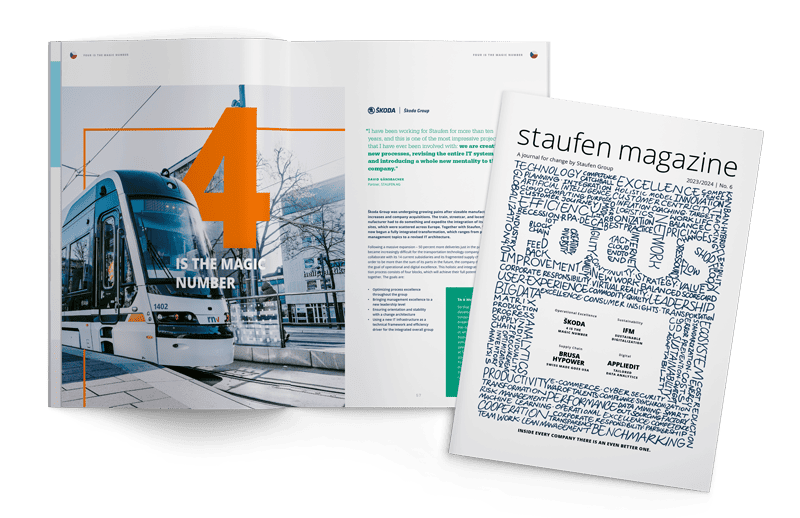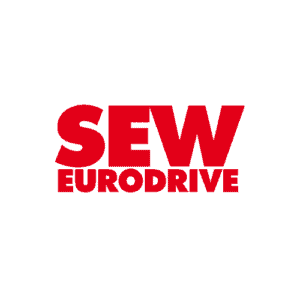
“A stable process landscape is essential”
Automation in intralogistics is an unstoppable force. Jens Kohlhaas, lean expert at SEW-EURODRIVE, and his colleague Gero Bockelmann, Manager System Planning MAXOLUTION®, are convinced of this. Together with Federica Kraft, project manager at Staufen AG, they explain how factory automation goes from a vision to an operative success.
What is the status of the industry as a whole and SEW-EURODRIVE in particular with regard to intralogistics 4.0?
Kraft: Many industrial companies are already intensely concentrating on the topic of automation and industry 4.0, but few of them have extensively implemented it in their factories. Logistics in particular has a great deal of potential in logistics for making processes more efficient and error-free through automation. Due to the often heavy focus on production, intralogistics, which mainly includes production supply and warehouse processes, has frequently been neglected in the past. However, we are also noticing a shift in the understanding of the value of intralogistics and the willingness to change processes and develop employees with regard to digital skills.
Kohlhaas: More than ten years ago, we at SEW-EURODRIVE developed a vision of an assembly plant as a modular factory. This further development of the production system and the new possibilities as a result of the automation of intralogistics processes are now resulting in completely new possibilities in process and layout design. In summation, today we achieve a much greater level of production variability, more flexibility with regard to variants, and increased productivity.
But SEW-EURODRIVE is not only betting on the solutions and its own company, but also introducing them to customers.
Bockelmann: Right, because for us, intralogistics 4.0 is not just an internal process topic, but rather also a business field. We are convinced that automation in intralogistics is an unstoppable force. We see in our projects, however, that companies have very differing levels of automation.
What challenges does this bring?
Bockelmann: Depending upon the situation of the company, we have to approach completely different topics. Whereas some companies are still making isolated improvements, others have already internalized universal value-stream orientation in their processes. We must often make customers understand the concept of an overarching process flow.
Kohlhaas: A stable process landscape based on lean production is essential if intralogistics is to be automated. The company needs a value-stream orientation and a good database, in addition to a clear idea of what the future will bring, meaning which areas they want to develop more dynamically in the future.
We are convinced that automation in intralogistics is an unstoppable force.
GERO BOCKELMANN
SEW-EURODRIVE GMBH & CO KG
Do the customers always know what the step of automation means in concrete terms?
Bockelmann: When a company approaches such a project for the first time, we have to get it right. Together with the customer, we develop an ideal image for future processes. Based on this ideal image, we then identify a meaningful first step for the transformation together. The goal is to create an entry point that allows the customer to gain experience and develop skills using the new technology.
What could such an entry solution look like?
Kohlhaas: In our electronics factory, for example, there is an application with which waste disposal is fully automated. The containers with the manufacturing waste are picked up by a logistics assistant several times each day, taken to the trash compactor, and automatically unloaded there. Then, the empty containers are brought back again. The entire process is now completely unmanned.
Bockelmann: Control of a point-to-point system is the simplest. The customer then has something to see and can imagine how it will work with other processes. The degree of complexity increases with value-adding processes.
How does one create the necessary consciousness and desire to change with regard to automation and matrix production in companies?
Kraft: When we plan logistics processes now, we notice that there is a great deal of willingness with regard to automation. The question of whether driverless transport vehicles – so-called Automated Guided Vehicles (AGV) – can be used often comes up quickly. We then explain that an AGV controlled by the system requires the same information as an employee. When we lay out new processes and systems, the second step, automation, is therefore already being considered.
Kohlhaas: Together with Staufen, we offer a seminar on matrix production in the SEW teaching factory. There, we build awareness of the challenges facing a modular factory regarding planning, control, and operation. The event is directed specifically at practitioners from the production environment. Just like we supported the introduction of the one-piece-flow with training measures around 20 years ago, we also train our employees regarding this further development of the production system.
In your opinion, what are the greatest advantages of automation in intralogistics?
Bockelmann: From a technical point of view, the quality of the transport increases when converting to AGVs. Automated systems introduce tranquility. Work accidents caused by hands-on transports declined when forklifts and tugger trains are removed from factories. In addition, their use creates more transparency: With an AGV, I always know where my workpiece is at any moment.
Kohlhaas: There are clear costs benefits. A robot works 24 hours a day and doesn’t take a vacation. The factory also becomes more variable due to matrix production. Where I would have had to redesign an entire assembly line earlier, today I can flexibly integrate new processes into my production by adding an additional process module.
Kraft: Often, the desire for automation is driven by a lack of specialized personnel. Today, many companies are forced to get by with fewer personnel. In addition, however, a company can utilize automation as a competitive advantage in the race for the best talent. Because young people simply expect digital and smart processes in their workplaces.
How can one make the success of automation measurable?
Bockelmann: By defining a goal. In the beginning, the company must ask itself about the intended extent of automation. For example: What value-adding activities do I want to support? Which non-value-adding processes do I want to completely automate?
How important is it to include the employees?
Kohlhaas: The inclusion of the employees in the change processes is an absolutely critical factor for success and will remain so, especially in direct dealings. In our case, this includes work in multifunctional teams, mutual situation analysis, and concept development in each project. This is the only way to turn affected people into participants and maintain momentum in the project.
Kraft: Many employees are still skeptical with regard to automation. For this reason, it is important to plan the processes together with people and clearly communicate the new roles they will play and how their duties will change in the future.
Seminars at SEW-EUrodrive
SEW-EURODRIVE GmbH & Co KG is an owner-managed family company headquartered in Bruchsal, Germany, and has been producing gear units, motors, gearmotors and inverter technology in various sizes for over 90 years. SEW sets new standards in the design of efficient factories and continuous further development of its own production systems.
Interview partner

Federica Kraft
Project Manager
Staufen.AG

Request the English Magazine now as a digital or print version

You might also be interested in

Unleashing Operational Performance through Tailored Data Analytics
Company data is still the most underused asset. In the labyrinth of industry operations, where data flows are as complex as they are copious, AppliediT stands out, a Spain based technological beacon illuminating the path to improved operational performance by using tailored data analytics solutions and data engineering services.
Read more
Consistent evolution finances a digital future
Examples such as the recent AI chatbot ChatGPT quickly give the impression that the digital transformation is taking place in disruptive spurts, indeed must take place. However, a look into the industrial heart chambers shows that the digital pioneers rely on continuity. An interview with Oliver Erb, Senior Vice President at CELONIS.
Read more
数字化 & 工业4.0
为了通过工业4.0的智能生产流程实现更高的生产力和效率,为了更快更有针对性地满足个人客户的愿望,或者为了开发全新的工业产品和商业模式,它们都是不可或缺的先决条件。尤其是中小型企业特别需要这方面的支持和咨询意见。
Read more



